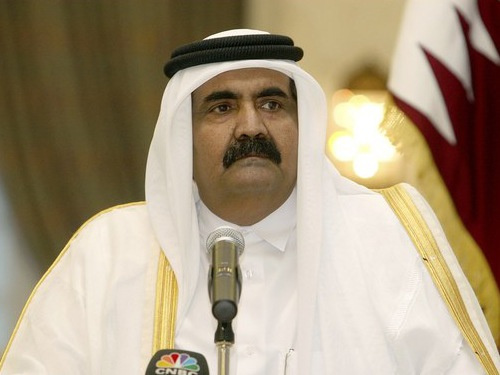Middle East’s Changing Geopolitics

Since a decade ago, we have been witnessing geopolitical developments in the Persian Gulf. Major changes in the balance of power had started previously and they have intensified with the recent chaos following the Arab Spring. As we know, there are three types of power in international relations:
1. Hard or military power 2. Soft or cultural power 3. The third type is a combination of the previous ones, called intelligent power
The power structure in the Middle East has experienced tangible changes during the past three to four decades. There have been both active regional and extra-regional players; Egypt, Iran, Syria, Israel, and Saudi Arabia, and the US as the only extra-regional player. But, during the last ten years, we have witnessed changes in the power structure of the Middle East. The extra-regional power is still the US which is present in the region with cold power. But, the front of regional players has witnessed changes; players like Egypt, Iran, Saudi Arabia, Israel, the United Arab Emirates, and Qatar. The last one is a very small country which, during the last decade, has played a very significant role in regional developments. One of the reasons behind the emergence of new regional players is the economic growth of small Persian Gulf littoral states. To clarify this point, the economic statistics are as follows:
* From 2000 to 2012, the average growth of annual income in the entire Middle East has been 3.5%. This number was 5% in the countries of the Persian Gulf Cooperation Council, and in Qatar 13%.
* Bank reserves of the countries of the Persian Gulf Cooperation Council from 2000 to 2006 have reached 500 billion dollars. The collective bank reserves of these countries have reached 10 trillion dollars.
* The annual income of national savings accounts, until this year, is 77 billion dollars. 50% of Egypt's stock market belongs to Persian Gulf littoral states. 75% of Jordan's stock market belongs to Qatar and the UAE. Therefore, dependency is formed between Arab countries and the Persian Gulf littoral states.
But, what are Qatar’s significant characteristics which lead to showing off of its power in regional equations?
In Qatar, power is very limited and two people are the sources of decision-making: the Emir of Qatar and the Prime Minister. In domestic policies, the leverages of decision-making are 4 people: cultural policy is in the hands of the second wife of the Emir of Qatar and policies related to sports are decided by the prince. The second factor is the low population and huge wealth of this country. Qatar's population is 1,800,000. 15% of this population is Qatari, and the rest are immigrants. The third characteristic is the determination and decisiveness of the Emir of Qatar who seeks to transform this country into not only a regional power, but also an effective element at the global level.
But, what are the elements of power in Qatar?
* Qatar is under the US’ security coverage. This characteristic has relieved Qatar from one aspect and allowed it to concentrate on other aspects.
* The second element is the widespread propaganda of Qatar. This propaganda is both direct and indirect. Directly, several multinational companies are officially employed by the government of Qatar for its international propaganda. This system shows Qatar as the cultural source of the Arab World. Indirectly, holding sports events and the internationalization of Qatar Airways have helped the rulers of Doha. At the present time, Qatar is host to 6 American universities.
* The third element is Qatar's active diplomacy. The Al-Jazeera network must be considered as part of this propaganda. The issue of mediation has also greatly empowered Qatar. In 2009, it was Qatar which, through mediation in Lebanon, prevented a civil war. A diplomat, in this regard, said: At 10 o'clock at night, the Emir of Qatar called Bashar Assad, Syria's president, and told him: You owe me and you should use your influence on the Hezbollah of Lebanon to prevent the occurrence of a civil war.
* The fourth element is the enormous investments of this country throughout the world. Qatar has invested 100 million dollars in Lebanon. Of course, this is not very high but Lebanon is the scene of competition of several countries. In Libya, the amount of investment has reached 10 billion dollars. In Syria, Qatar has invested 12 billion dollars and in Greece, 5 billion dollars. In Britain, it has bought one billion pounds worth of stocks and 24% of London's stock market belongs to Qatar. In 2011, the volume of Qatar’s total investments in the world was 30 billion dollars. Qatar's billions of dollars worth of aid to Egypt, Tunisia, and Morocco was recently announced.
Conclusions:
1. The nature of international power is changing. It should be seen how economic influence will impact the nature of cultural and military power.
2. The role of small countries in international relations is changing. The realistic theoreticians in international relations studies have always ignored the role of small countries. But, we are now witnessing these changes, so that a small country like Qatar is playing a very distinctive role, particularly in the Middle East and the Persian Gulf region.
3. The power structure in the Middle East and the Persian Gulf is changing and it is directed towards Qatar.

